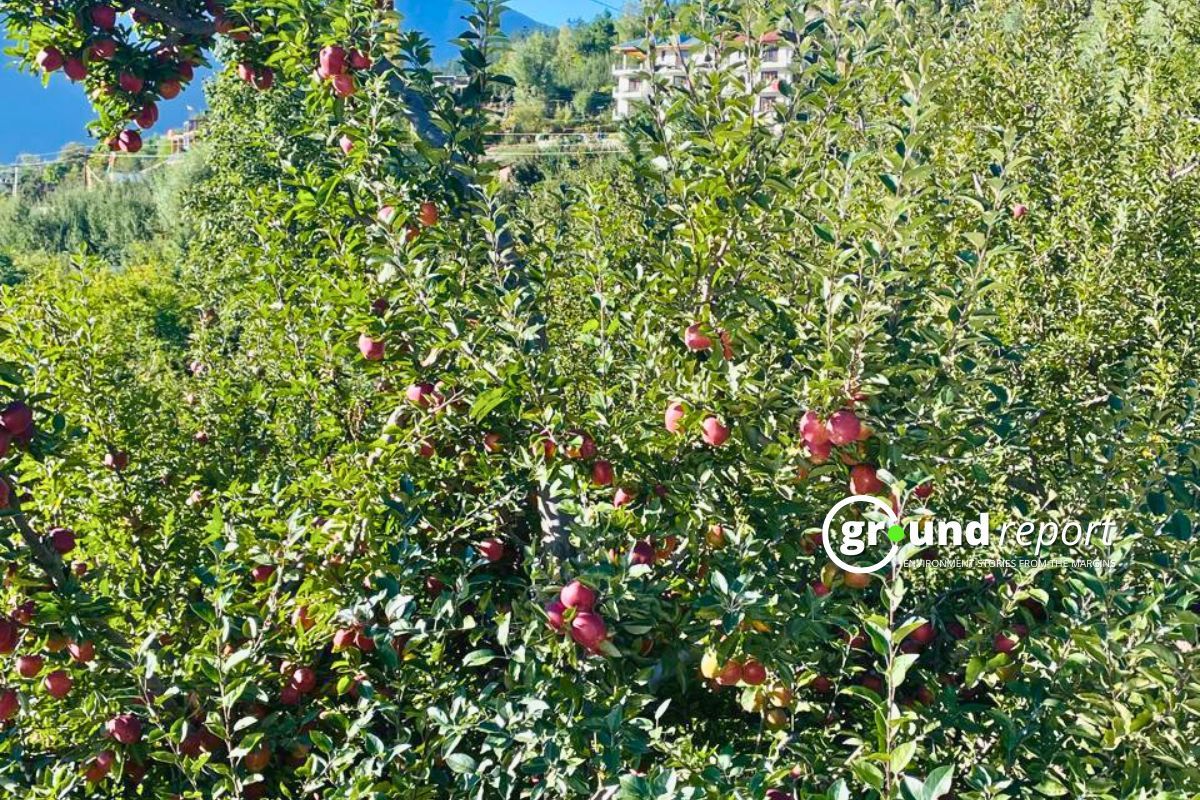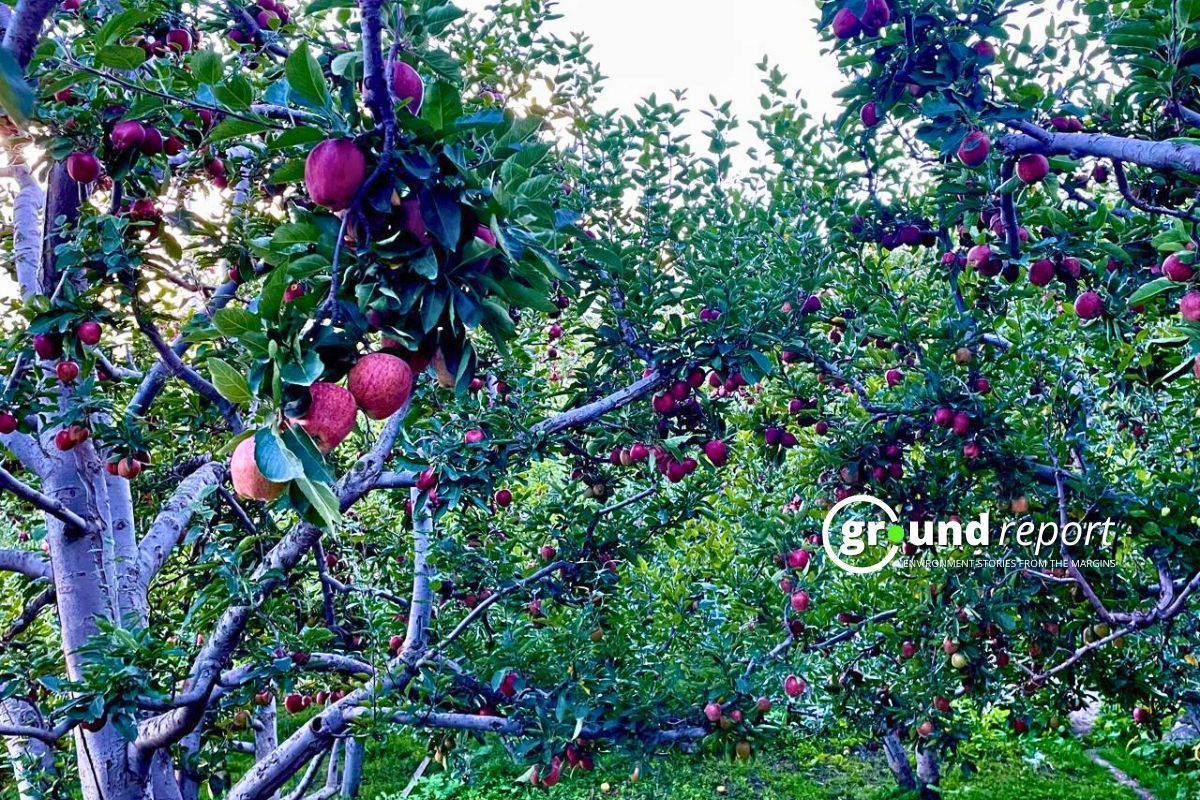Himachal Pradesh’s apple industry is vital to the state’s economy, generating nearly ₹5,000 crore annually and supporting thousands of families. However, the 2024 apple harvest posed difficulties, leaving many orchardists with lower yields and profits.
Himachal Pradesh is the second-largest apple producer in India after Jammu and Kashmir.The harvest season spans from July to November, peaking in high-altitude districts like Shimla, Kullu, Kinnaur, and Mandi. Himachal apples are renowned for their sweetness and quality, making them sought after in major markets like Delhi, Mumbai, and Kolkata.
Despite its strong reputation, the 2024 apple season faced hurdles, leading to a drop in production and impacting apple quality.

Decline in 2024 apple production
The Himachal Pradesh Horticulture Department projected 2.91 crore boxes for 2024. However, by October 30, only 2.07 crore boxes had been dispatched, falling short by 84 lakh boxes. This marks a trend of fluctuating apple yields in recent years.
The data shows significant year-to-year fluctuations in apple production.
Factors contributing to lower 2024 production
The 2024 apple production in Himachal Pradesh faced challenges, resulting in a noticeable yield decline. A primary factor was unpredictable weather during the growing season.
Winter had insufficient snowfall, leading to a lack of chilling hours for apple trees to develop buds. This poor dormancy period resulted in weak bud formation, impacting apple growth. During the flowering and fruit-setting stages, the area experienced erratic rainstorms and temperature changes.
Unseasonal heatwaves disrupted pollination, lowering fruit yield. Summer had drought-like conditions with insufficient rainfall, resulting in smaller apples. The reduced size and quality lowered market value.
SP Bhardwaj, a horticulture expert, said, “Erratic weather patterns have reduced apple quantity and affected their size and color, making them less marketable.”

Another significant change this year was the shift to universal cartons from traditional telescopic cartons. Universal cartons with a standard capacity of 20 kg replaced telescopic cartons, which could hold up to 30 kg of apples. While this change increased the number of boxes dispatched to markets, it reduced the total weight of apples.
In 2023, apple production was 4.28 million metric tons. However, in 2024, despite more boxes, production dropped to 4.15 million metric tons, a decrease of 13,439 metric tons. This discrepancy is due to the new packaging system, which affected market statistics and created confusion regarding the increase in box numbers despite lower overall weight.
Low-quality yield hurt farmer profits
Market competition and price dynamics significantly affected apple sales this season. Influx of imported apples from the USA, Iran, and New Zealand pressured local prices. Imported apples, sold at competitive rates, challenged Himachal’s produce to maintain its usual pricing.
At the season’s start, high-quality apples sold for ₹3,000 per 20 kg box. However, as the market saturated with imports, prices dropped sharply post-mid-August. Many orchardists reported that about 70% of this year’s harvest was classified as D-grade due to the weather’s adverse impact on size and appearance, resulting in lower market prices.
Only 30% of the apples were premium quality, securing better rates. Orchardist Sanjeev Chauhan noted the challenges, explaining that the dominance of lower-grade apples reduced profitability for farmers, who struggled to compete with imports.

The decline in apple production has severely impacted orchardists’ livelihoods. Rising costs of fertilizers, pesticides, labour, and transportation have strained their finances. Many farmers reported that reduced yields and poor-quality apples made it difficult to recover expenses, let alone make a profit.
Ramesh Kumar, an orchardist from Karsog, expressed his concerns, saying, “The production was low, and the increased costs have left us with minimal profits. Competition from imported apples has further reduced the demand for local produce.”
The ₹5,000 crore apple economy is crucial to Himachal Pradesh’s GDP. A decline in apple production impacts sectors like transportation, packaging, and marketing. With reduced 2024 output, there’s concern that the state’s apple sales may fall short, affecting the broader economy.
Keep Reading
Why Homegrown Apples could disappear in Kashmir in coming years
Extreme weather: Himachal’s apple harvest could be over 50% less this year
J&K: Growers Express “Helplessness” Over Lifting Of Import Duties On Apples, Walnuts
Kashmir’s rice fields wither amid rising temperatures & water scarcity
Follow Ground Report on X, Instagram and Facebook for environmental and underreported stories from the margins. Give us feedback on our email id greport2018@gmail.com.
Don’t forget to Subscribe to our weekly newsletter, Join our community on WhatsApp, and Follow our YouTube Channel for video stories.






